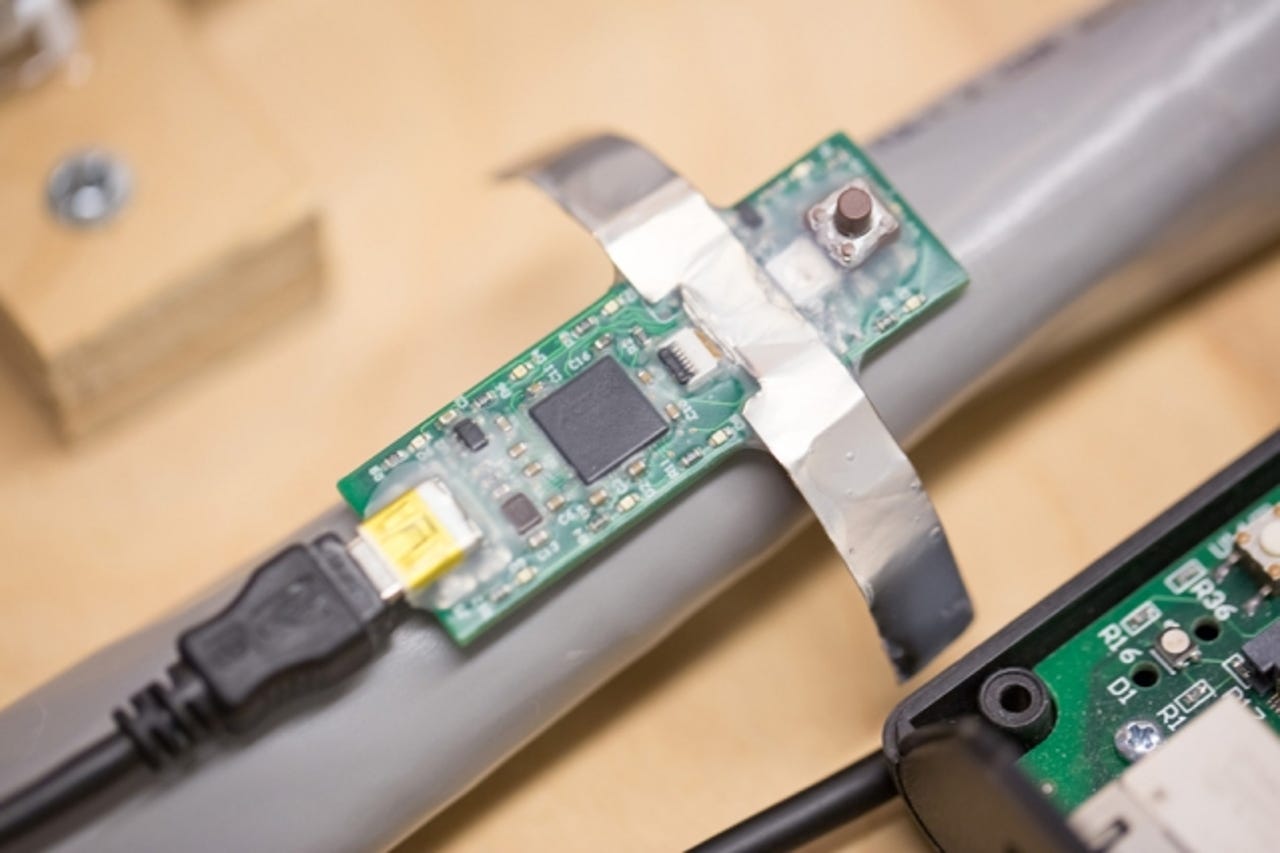If cloud privacy risks turned you off Google's Nest, MIT may have a better answer


Installation should be simple since the user only needs to attach small sensors to incoming power lines.
Researchers at MIT say devices and software they've developed will give you an accurate reading of energy usage in the home, without siphoning off private data to the cloud.
Internet of Things
The MIT researchers believe their wireless energy-monitoring system will cost around $30 per household if it is commercialized and will also offer users valuable insights into energy usage in the home.
Importantly, most of the data is processed at home rather than in the cloud, addressing privacy concerns about using home monitoring systems, such as the thermostat from Google-owned Nest.
According to MIT, the system has been tested at a military training base where it revealed that tents were being heated even when they were unoccupied during the day. Another test at a home revealed that copper plumbing was carrying potential live voltage.
The theory behind the system is detailed in the current issue of the IEEE Sensors Journal. The paper presents a new calibration technique that allows the use of non-contact electromagnetic field sensors to monitor currents in cables from a distance.
If the system works as envisaged, installation should be simple, as the user only needs to attach small sensors to incoming power lines. The sensors do not need to be precisely located, and since there's no dangerous wiring, they won't need to involve expensive electricians.
Also, thanks to a register of device signatures, the system doesn't need every single device to be hooked up to it, leaving the software to distinguish between different devices, lights, and motors in the home and identify usage patterns.
MIT notes that wireless sensors have been used to detect magnetic and electric fields near a wire before, but these systems were fiddly to set up.
"The MIT team solved the problem by using an array of five sensors, each slightly offset from the others, and a calibration system that tracks the readings from each sensor and figures out which one is positioned to give the strongest signal," MIT said.
To identify different devices in the home, the researchers analyzed data from the sensors to find signatures that correspond to certain variations in current and voltage when a device is switched on or running.
The researchers developed a catalog of signatures after testing in the lab and in homes at the Fort Devens Army base in Massachusetts, and on the US Coast Guard cutter Spencer.
Finally, the MIT team built an interface that lets users isolate time segments to reveal the behavior of devices and motors throughout a day: for example, the way a water heater switches on and off.
MIT electrical engineering professor Steven Leeb was particularly impressed with the team's discovery that energy monitoring can be achieved despite keeping data within the home. The system only releases "small subsets" of data for cloud processing, which addresses bandwidth and privacy concerns.
William Singleton, an engineer at the US Army Fort Devens Base Camp Integration Laboratory, who was not involved in the research, said the system has the potential to save fuel, water, and equipment maintenance, which would offer a commander more choices on the battlefield.